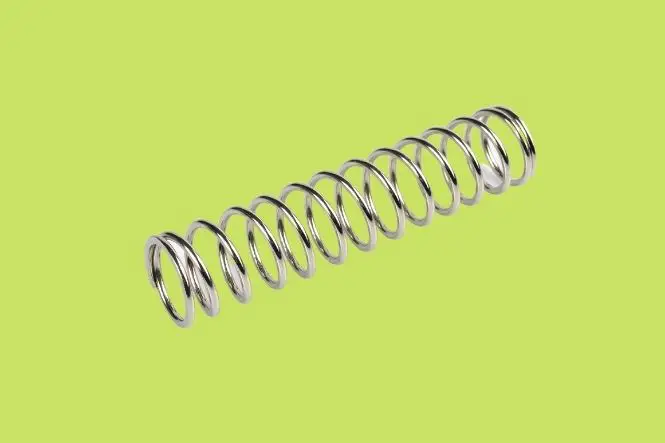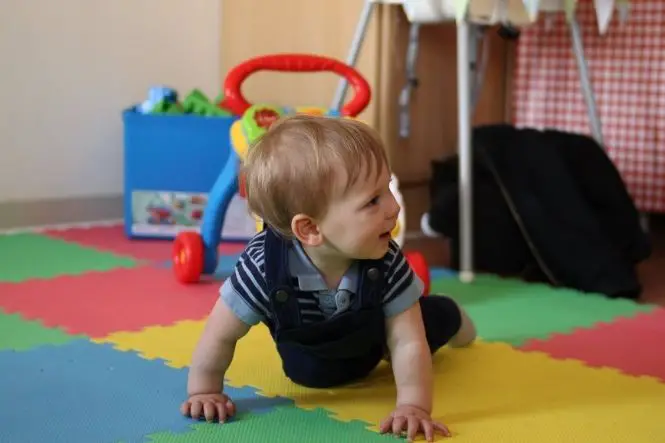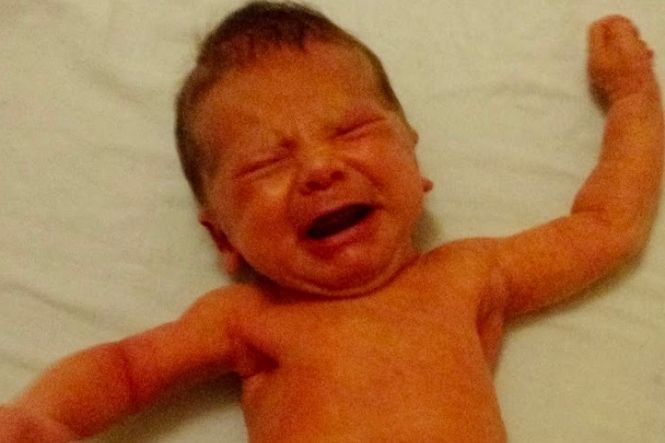Torticollis is a medical condition that results in the sternocleidomastoid muscle on one side of the neck being shorter than the other. There are two types of torticollis: congenital and acquired. When an infant is born with the condition, it is called congenital muscular torticollis. If this condition develops at any point after the child’s birth, it is referred to as acquired muscular torticollis.
Depending on the age of your child, torticollis may be easy to identify; here are five common signs that may mean your child has torticollis. First, your child’s neck may have a soft bump on one side of it–you may not be able to see it but only feel it with your fingers. Second, your child’s head might not move up and down or turn to the side as easily as you would expect. Third, their head may continuously tilt down toward their chest–almost three-quarters of children with torticollis will experience this on the right side.
The fourth sign of possible torticollis is that your child tends to be more comfortable breastfeeding on one side than the other–they may seem more fussy or distracted when turned one way. Lastly, the child may have a flattened appearance on one side of their head–this is because it is uncomfortable for the child to lay on one side, so they favor the other. Any one of these symptoms or a combination of them can be an indication that your child has torticollis and should be examined by a healthcare provider.
Table of Contents
What Causes Torticollis In A Child?
There are various causes of torticollis in children and these differ based on whether the child was born with torticollis or developed the condition after birth. Often, a child who was born with torticollis was breech or in another cramped position in utero–this can create pressure on one side of the head and cause the neck muscle to tighten. Torticollis can also be caused during the delivery process–if forceps are used or if there is a vacuum extraction, this can cause too much pressure on the head and neck.
In the case of acquired torticollis, something has occurred at some point after the birth of the baby to cause a shortening or tightening of the neck muscle on one side. This may be from an injury such as whiplash during a car accident. Similar types of vigorous movement, particularly in a young baby whose neck muscles are not well developed, can also cause torticollis.
Acquired torticollis can sometimes be the result of illness such as a virus or a bacterial infection. Many common children’s illnesses can lead to torticollis–these include tonsillitis, sinus infections, sore throats, and ear infections. Even something as simple as sleeping one night in an awkward position can cause your child to develop torticollis.
At What Age Is Torticollis Diagnosed?
With congenital muscular torticollis, your child is born with this condition but it may not be noticed or diagnosed until several weeks later. Acquired torticollis can be diagnosed at any point after birth. Since babies have very little control over the muscles in their neck when they are first born and for the first few weeks of life, it can be challenging to tell if something abnormal is happening.
While up to three percent of babies are born with torticollis, the majority of them are not diagnosed until after they are six weeks of age. At this point, babies have developed their neck muscles enough that it becomes more obvious if there is a problem. If you see any of the signs of torticollis in your baby, make an appointment with your healthcare provider to have them examined.
Torticollis can also occur in later childhood, adolescence, and even adulthood. Most of us have experienced that pain in the neck after sleeping the wrong way–this is torticollis, which is the Latin word for stiff neck. The good news is that regardless of age, almost all cases of torticollis can be easily treated without medication or invasive procedures.
How Do You Fix Torticollis?
If you suspect your child may have torticollis, it is important to make an appointment to see your healthcare provider. During this visit, your provider will examine your child to see how far they can turn their head to each side and if there is discomfort in doing so. In most cases of torticollis, all that is needed are simple stretching exercises to lengthen and loosen the neck muscle.
Parents can easily do exercises with their child at home to treat torticollis. With older children, it can be simple enough to demonstrate the neck exercises and have them copy you but with infants, you have to get a little bit creative. Place or hold toys so that your infant needs to turn their head to see them–or when breastfeeding, position them on the side they need to stretch out. Tummy time is also an excellent way to help develop their neck muscles.
Over time, your child’s torticollis should resolve with these exercises. The earlier that you start and the more consistently the exercises are done, the faster the progress will be–it can take up to six months for the issue to completely resolve. In more severe cases or cases in which exercises do not help, your health care provider may recommend physical therapy; in very rare cases surgery may be required, though this is not usually done on babies.
What Happens If Torticollis Goes Untreated?
It is important that you have your child examined by your healthcare provider if they have torticollis. Although some cases of torticollis will resolve on their own, treatment is often recommended and can speed up the recovery process. Babies that do not receive treatment for torticollis can end up having further challenges that can affect their development and movement as they get older.
Untreated torticollis can cause your baby to have problems using their eyes to track objects and can also cause them to have less motor control of their head. Babies may also have nutritional deficits if they are not feeding due to discomfort. Other issues can include delays in sitting up, crawling, and walking; delay or inability to roll over on one side; and difficulties with balance.
Aside from these issues, it is important to get your baby examined if you suspect torticollis since this can be associated with other medical conditions. For instance, about 20 percent of infants born with torticollis will also have hip dislocation. Torticollis can also be a symptom of Klippel-Feil syndrome (a bone disorder) and Down syndrome. Infections and allergies can also be connected to some cases of torticollis in babies.
Final Thoughts
While torticollis is usually a relatively harmless condition for most infants and children, it can be connected to more serious conditions in some cases. Seeing a healthcare provider early gives your child the best chance of benefiting from treatment and reducing any delays in development. Whether your child’s torticollis occurred in utero or was caused by injury, illness, or during the delivery, they will typically display similar symptoms. Knowing the signs of torticollis will allow you to recognize this condition in your child if they develop it.







